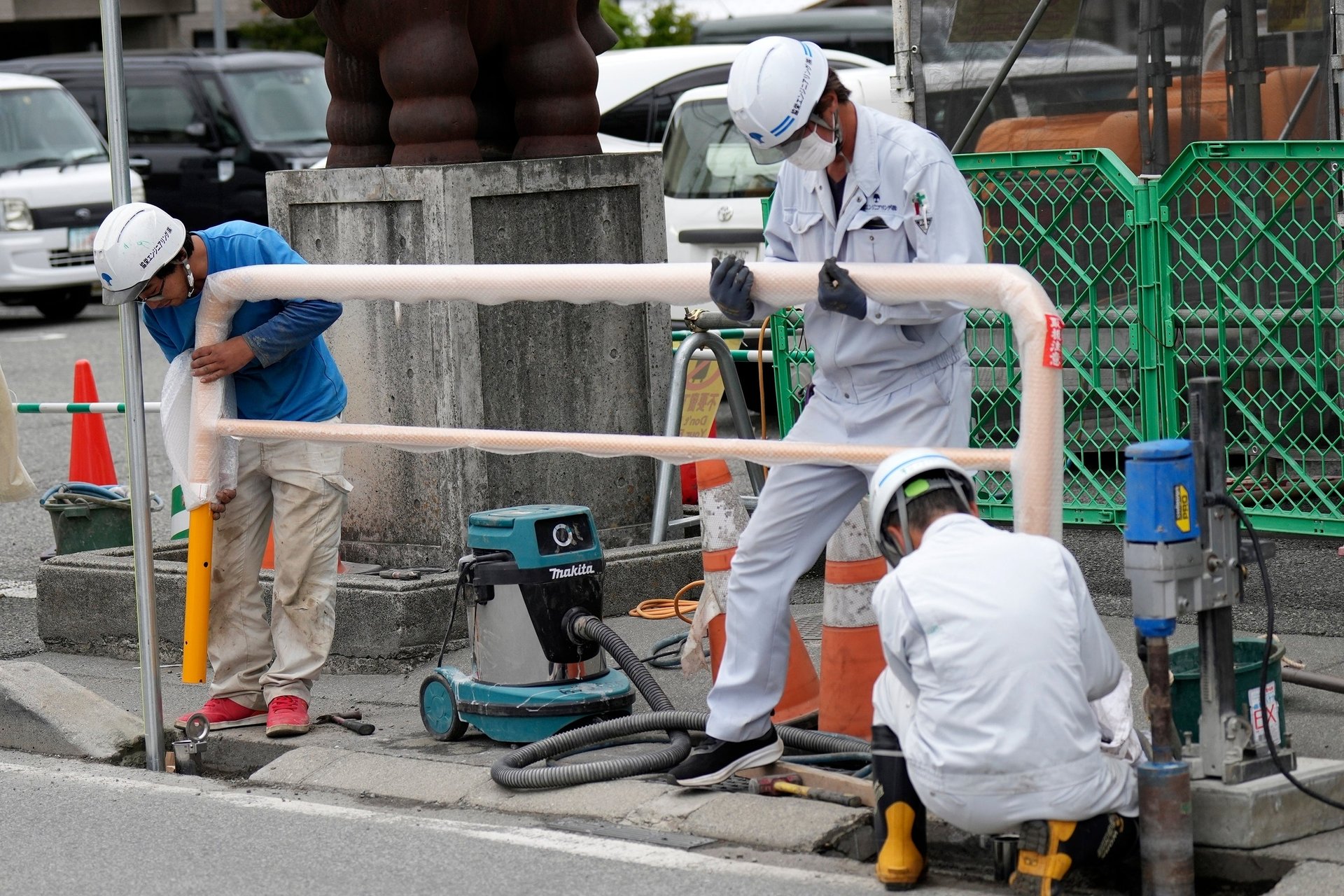To fend off tourists, a town in Japan is building a big screen blocking the view of Mount Fuji
The Japanese town of Fujikawaguchiko has had enough of tourists

FUJIKAWAGUCHIKO, Japan (AP) — The town of Fujikawaguchiko has had enough of tourists.
Suggested Reading
Known for a number of scenic photo spots that offer a near-perfect shot of Japan’s iconic Mount Fuji, the town on Tuesday began constructing a large black screen on a stretch of a sidewalk to block the view of the mountain. The reason: misbehaving foreign tourists.
Related Content
“Kawaguchiko is a town built on tourism, and I welcome many visitors, and the town welcomes them too, but there are many things about their manners that are worrying,” said Michie Motomochi, owner of a cafe serving Japanese sweets “ohagi,” near the soon-to-be-blocked photo spot.
Motomochi mentioned littering, crossing the road with busy traffic, ignoring traffic lights, trespassing into private properties. She isn't unhappy though — 80% of her customers are foreign visitors whose numbers have surged after a pandemic hiatus that kept Japan closed for about two years.
Her neighborhood suddenly became a popular spot about two years ago, apparently after a photo taken in a particular angle showing Mount Fuji in the background, as if sitting atop a local convenience store, became a social media sensation known as “Mt. Fuji Lawson,” town officials say.
The mostly foreign tourists have since crowded the small area, triggering a wave of concerns and complaints from residents about visitors blocking the narrow sidewalk, taking photos on the busy road or walking into neighbors’ properties, officials said.
In Europe, concerns over tourists overcrowding historic cities led Venice last week to launch a pilot program to charge day-trippers a 5-euro ($5.35) entry fee. Authorities hope it will discourage visitors from arriving on peak days and make the city more livable for its dwindling residents.
Fujikawaguchiko has tried other methods: signs urging visitors not to run into the road and to use the designated crosswalk in English, Chinese, Thai and Korean, and even hiring a security guard as crowd control. None worked.
The black mesh net, when completed in mid-May, will be 2.5 meters (8.2 feet) high and 20 meters (65.6 feet) long, and will almost completely block the view of Mount Fuji, officials said.
Dozens of tourists gathered Tuesday taking photos even though Mount Fuji was not in sight due to cloudy weather.
Anthony Hok, from France, thought the screen was an overreaction. “Too big solution for subject not as big, even if tourists are making trouble. Doesn't look right to me," he said. The 26-year-old suggested setting up road barriers for safety instead of blocking views for pictures.
But Helen Pull, a 34-year-old visitor from the U.K., was sympathetic to the local concern. While traveling in Japan in the past few weeks, she has seen tourism “really ramped up here in Japan from what we've seen."
“I can see why people who live and work here might want to do something about that," she said, noting many were taking pictures even when the mountain was not in the view. "That's the power of the social media.”
Foreign visitors have flocked to Japan since the pandemic border restrictions were lifted, in part due to the weaker yen.
Last year, Japan had more than 25 million visitors, and the number this year is expected to surpass nearly 32 million, a record from 2019, according to the Japan National Tourism Organization. And the government wants more tourists.
While the booming tourism has helped the industry, it has triggered complaints from residents in popular tourist destinations, such as Kyoto and Kamakura. In Kyoto, a famous geisha district recently decided to close some private-property alleys.
Locals are uncertain about what to do.
Motomochi said she cannot imagine how the black screen can help control the flow of people on the narrow pedestrian walk and the road next to it.
Yoshihiko Ogawa, who runs a more than half-century-old rice shop in the Fujikawaguchiko area, said the overcrowding worsened in the past few months, with tourists gathering from around 4-5 a.m. and talking loudly. He sometimes struggles to get his car in and out of garage.
“We’ve never thought we'd face a situation like this,” Ogawa said, adding he is unsure what the solution might be. “I suppose we all just need to get use to it.”
___
Yamaguchi reported from Tokyo.